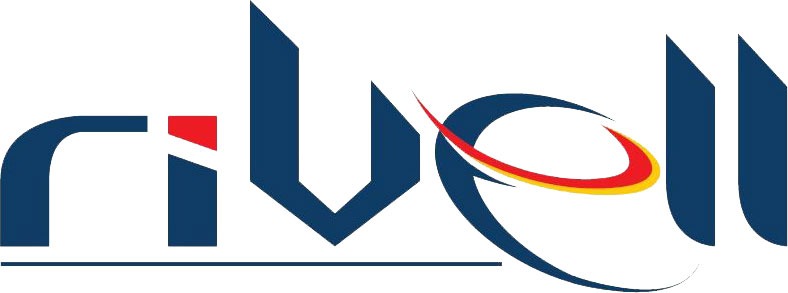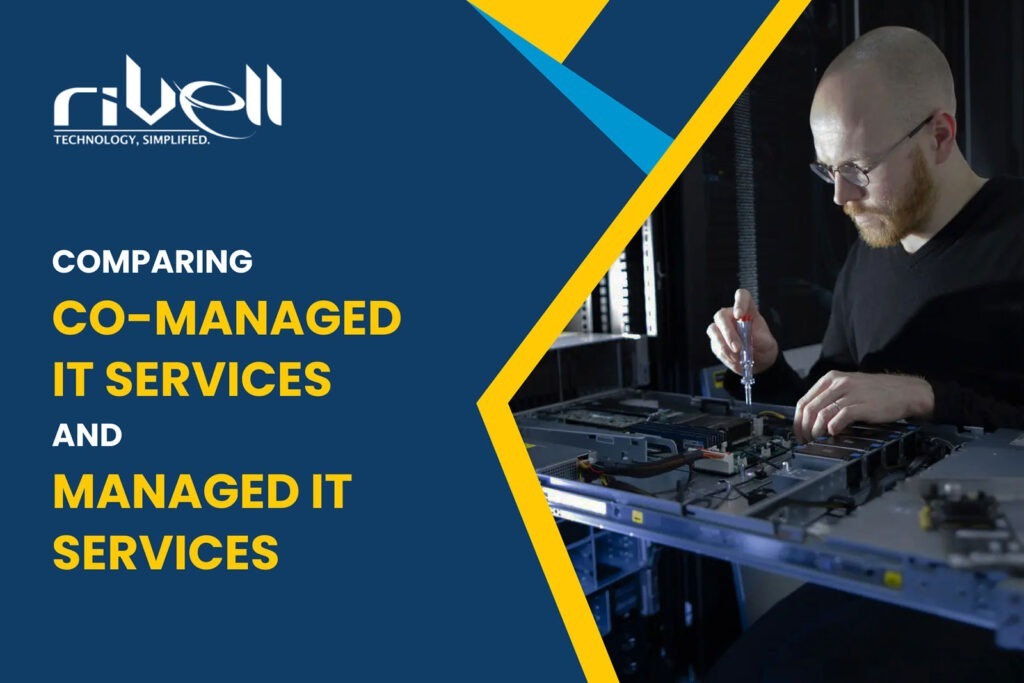Today, businesses heavily rely on IT infrastructure to stay competitive and ensure seamless operations. In this digital age, both Co-managed IT Services and Managed IT Services are popular options for businesses seeking external managed IT support. This article aims to provide insights into these services and help businesses make informed decisions regarding their IT needs.
What is Co-managed IT Services ?
Co-managed IT Services refers to a collaborative approach where an organization partners with an external IT service provider to share responsibility for managing and supporting their IT infrastructure. It allows businesses to augment their internal IT team’s capabilities, use specialized expertise, and benefit from proactive monitoring, maintenance, and co-managed IT support services. Furthermore, according to industry estimates, successfully deploying co-managed IT solutions can lead to a significant reduction in
IT costs by 25% to 45% and increase operational efficiency by 45% to 65%
What is Managed IT Services ?
Managed IT Services, on the other hand, involve outsourcing the complete management and support of an organization’s IT infrastructure to a service provider. This comprehensive approach typically includes services such as network monitoring, cybersecurity, backup and recovery, software updates, and helpdesk support. Organizations that embrace managed IT solutions typically witness a
25% reduction in costs while significantly enhancing their cybersecurity measures by 40%
Co-managed IT Services vs Managed IT Services
While both Co-managed IT Services and Managed IT Services offer valuable co-managed IT networking services, there are important differences to consider. Co-managed IT Services allow businesses to maintain some control over their IT operations while leveraging the expertise of a managed service provider. Managed IT Services, on the other hand, provide a more hands-off approach, allowing businesses to offload all IT-related responsibilities to experts.
Advantages of Co-managed IT Services
1. Flexibility
Co-managed IT Services offer the flexibility of choosing specific IT functions to outsource while retaining control over critical operations. This allows businesses to align their managed IT support with their unique needs and priorities.
2. Direct Involvement
With Co-managed IT Services, businesses have direct involvement in decision-making and can prioritize areas that require external support. They can actively collaborate with the service provider to ensure that the IT strategy aligns with their business goals.
3. Cost Savings
Co-managed IT Services can provide cost benefits by allowing businesses to outsource specific IT functions instead of fully outsourcing their entire IT infrastructure. It enables businesses to optimize their IT spending by focusing on areas that require external support while managing other functions internally
Disadvantages of Co-managed IT Services
1. Coordination Effort
Co-managed IT Services require active coordination between the business and the service provider. This coordination effort can involve additional management effort and may require clear communication channels to ensure effective collaboration.
2. Partial Outsourcing
Since Co-managed IT Services involve outsourcing only specific IT functions, businesses need to have a well-defined understanding of the functions that need external support. Failure to properly identify these functions can lead to inefficiencies or gaps in managed IT support.
Advantages of Managed IT Services
1. Comprehensive IT Support
Managed IT Services provide businesses with comprehensive IT support, including network monitoring, cybersecurity, backup and recovery, software updates, and helpdesk support. This ensures that businesses can focus on their core activities while leaving the IT operations in the hands of experts.
2. Specialized Expertise
With Managed IT Services, businesses can access specialized expertise and skills that might not be available in-house. Service providers often have dedicated teams with extensive knowledge and experience in managing IT infrastructure.
3. 24/7 Monitoring and Rapid Issue Resolution
Managed IT Services typically offer round-the-clock monitoring and support. This ensures that any IT issues are identified and resolved promptly, minimizing downtime and optimizing the performance of business systems.
Disadvantages of Managed IT Services
1. Reduced Control
Fully outsourcing IT operations through Managed IT Services can result in a reduced level of control over the IT infrastructure. Businesses need to carefully consider their comfort level with delegating control to a service provider.
2. Dependency on Service Provider
With Managed IT Services, businesses rely heavily on the service provider for their IT operations. This dependency requires trust in the provider’s capabilities, responsiveness, and ability to meet service-level agreements.
It’s important for businesses to carefully evaluate their specific needs, priorities, and preferences when considering either Co-managed IT Services or Managed IT Services. Each option has its advantages and disadvantages, and the decision should align with the business’s goals and IT strategy.
Which IT Services Suit Your Business?
The choice between Co-managed IT Services and Managed IT Services depends on the specific needs and preferences of each business. Businesses that require a high level of control and have an existing IT team may find Co-managed IT Services more suitable. Conversely, organizations that seek to completely outsource their IT management and gain access to a broader range of expertise may opt for Managed IT Services. It’s worth noting that approximately 42% of organizations, which have delegated at least three-quarters of their IT management to third-party providers, are motivated by the opportunity to capitalize on market opportunities or rapidly scale their operations.
Read more : What are the most In-demand services in the IT Services Industry 2024
Similarities in Co-Managed And Managed IT Services
Despite their differences, Co-managed IT Services and Managed IT Services share similar goals, which include optimizing IT performance, ensuring security, and minimizing downtime. Both service models aim to provide proactive support, ongoing maintenance, and timely issue resolution.
Considerations for Choosing Between Co-managed IT and Managed IT Services
1. Evaluating Provider Capabilities
When making a decision between Co-managed IT Services and Managed IT Services, it is crucial to thoroughly evaluate the capabilities and expertise of potential providers. Look for providers who have a strong track record in the specific areas you require assistance with, such as network infrastructure, cybersecurity, or application development. Consider their certifications, industry experience, customer reviews, and case studies to ensure they align with your specific needs. Effective evaluation of provider capabilities will help you secure a reliable and competent partner for your IT requirements.
2. Budgetary Considerations
Budget plays a significant role when choosing between Co-managed IT Services and Managed IT Services. It is important to compare the costs associated with each service model and assess whether it aligns with your available resources. Consider the managed it services pricing structure, including any upfront costs, recurring fees, and additional charges for specific services or customizations. Additionally, evaluate the potential return on investment (ROI) and cost savings that each service model can provide in the long run. Careful evaluation of budgetary considerations will help you make an informed decision while ensuring financial sustainability for your IT operations.
3. Long-term IT Strategy Alignment
Aligning the chosen IT solution with your long-term IT strategy is essential for future growth and scalability. Evaluate how well the Co-managed or Managed IT Services align with your organization’s IT goals, vision, and roadmap. Consider the level of flexibility and customization offered by each service model, as well as their compatibility with your existing infrastructure and future expansion plans. Pay attention to the provider’s ability to adapt to emerging technologies and industry trends, ensuring that your IT strategy remains future-proof. By assessing long-term IT strategy alignment, you can choose a solution that supports your organization’s growth and agility in the digital landscape.
By addressing these considerations individually, businesses can effectively weigh their options and make an informed decision between Co-managed IT Services and Managed IT Services.
Difference Between Co-Managed IT Services vs Managed Services
| Feature | Co-Managed IT Services | Managed Services |
|---|---|---|
| Definition | Collaboration between in-house IT department and external IT provider for specific tasks or functions. | Outsourcing IT services entirely to an external provider. |
| Control | Shared control between the in-house team and external provider | External provider has full control over IT operations |
| Responsibilities | Shared responsibilities for IT management and support | External provider handles all IT management and support tasks |
| Scope | Typically focused on specific tasks or areas, such as security, helpdesk support, or infrastructure management | Comprehensive IT management covering all aspects of IT infrastructure |
| Customization | Tailored to meet specific needs of the organization, allowing for greater flexibility | Standardized packages may limit customization options |
| Scalability | Flexible scalability based on changing needs and requirements | Scalability may be constrained by the terms of the service agreement |
| Cost | Costs are usually variable and may depend on the services utilized | Fixed monthly or annual fees based on the scope of services |
| In-house expertise | Utilizes in-house IT expertise alongside external support | Reliance on external expertise; minimal in-house IT involvement |
| Risk management | Shared responsibility for risk management and mitigation | External provider primarily responsible for risk management |
| Communication | Close collaboration between in-house and external teams, requiring effective communication | Communication primarily with the external provider |
| Decision-making | Joint decision-making between in-house and external teams | Decision-making primarily rests with the external provider |
| Control over resources | Retains control over internal resources and infrastructure | Outsourcing means relinquishing control over resources |
| Compliance requirements | Both parties may share compliance responsibilities. | External provider often assumes compliance obligations |
Get the Right IT Solution for Your Business with Rivell
At Rivell, we understand the importance of selecting the right IT service model for your business. With our expertise in Co-managed IT Services and Managed IT Services, we can tailor a solution that aligns with your unique needs, ensuring optimal IT performance, security, and reliability.
Frequently Asked Questions
1. Can I switch from Co-managed IT Services to Managed IT Services or vice versa?
Yes, depending on your changing business requirements, you can switch between these service models with the help of a knowledgeable IT service provider.
2. How can Co-managed IT Services benefit my existing IT team?
Co-managed IT Services can augment your internal IT team by providing specialized expertise, allowing them to focus on strategic projects and business priorities.
3. What are the key factors to consider when deciding between Co-managed IT Services and Managed IT Services?
When choosing between Co-managed IT Services and Managed IT Services, consider your IT needs, goals, budget, internal capabilities, required control and oversight. Assess your IT infrastructure’s scope, complexity, risks, support level needed, and responsiveness. These factors help you decide which service model suits your business requirements.
Conclusion
In conclusion, the choice between Co-managed IT Services and Managed IT Services is significant for businesses seeking external managed IT support. Co-managed IT services offer flexibility, direct involvement, and cost savings, but require active coordination and may lead to partial outsourcing. On the other hand, Managed IT Services provide comprehensive support, specialized expertise, and 24/7 monitoring but come with reduced control and dependency on the service provider.
Ultimately, businesses should carefully evaluate their needs, priorities, and long-term IT strategy to determine which service model aligns best with their goals. Partnering with a knowledgeable IT service provider can help ensure optimal IT performance, security, and reliability in today’s digital landscape.
Ready to take the next step in enhancing your IT infrastructure? Submit our contact form or give us a call today to explore how our tailored IT solutions can empower your business for success.









